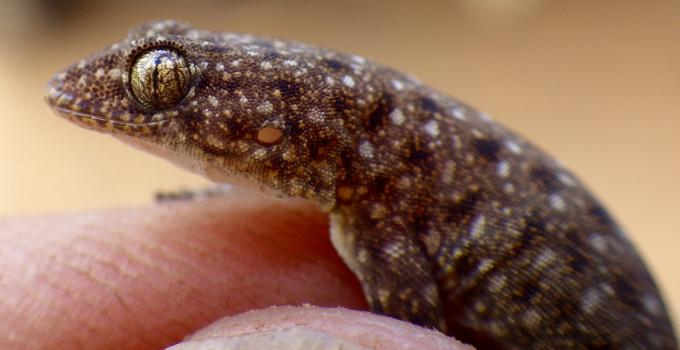Alumni newsletter

'Snow Gum' Issue 1, Mar 2016. ANU Research School of Biology's alumni newsletter
Humans are innately fascinated by the natural world. We continually gather and organise bits and pieces of it. As children we pursued feathers, shells, or the ever-illusive dragonfly. A plant or insect collection was an engrossing undergraduate assignment. Few of us can deny the delight of a previously unseen bird visiting our garden. And the discovery of new species is a perennially popular newspaper headline.
Now, new genomic technology is proving that the thrill of discovery is greater than ever before.
Sequencing large sections of a genome, an organism’s genetic material, is now not only possible for the mice and fruit flies of the lab, but for all living things, from all natural habitats.
This has led to the discovery of new species at a rate greater than at any time in the last 250 years of modern taxonomy. It has also meant that species evolutionary relationships, the branches of ‘the tree of life’, can be pieced together with far greater clarity.
Genomics, along with developments in modeling and analysis, are transforming our understanding of where biodiversity is concentrated, how it came to be there, and what we can predict about its responses to future environmental change.
In 2012, the joint ANU-CSIRO Centre for Biodiversity Analysis (CBA) was established to exploit these new ‘biodiversity science’ capabilities in the discovery, understanding and conservation of Australia’s unique biodiversity.

Based at the ANU Research School of Biology and CSIRO's Black Mountain laboratories, the CBA is founded on ANU and CSIRO’s world-class research strengths in evolutionary biology, genomics, bioinformatics, spatial ecology and paleoecology, and key infrastructure such as the national biological collections, and genomic and computer labs.
The Centre provides seed grants to establish collaborative ANU-CSIRO pilot projects, and supports and coordinates conferences, workshops, seminars and local and international visiting scientists. Many of these activities, particularly the training workshops, are developed for (and by) graduate students and early career researchers based on their research interests and needs.
These developments in genomics and bioinformatics mean there has never been a more exciting time to be a biodiversity scientist. But pragmatically, it also has never been more urgent.
In addition to supporting and coordinating ANU and CSIRO research and training collaborations, the Centre has another major objective - connecting CBA staff, students and their research discoveries with environmental policy makers and managers.
Biodiversity science has enormous potential to assist with a wide range of contemporary conservation issues such as species responses to climate change, threatened species management, habitat disturbance and restoration, and biosecurity and invasive species.
The CBA encompasses our deep-rooted interest in the patterns and processes of the natural world with cutting-edge genetic technology and data analysis.
It is a unique cross-disciplinary, cross-institutional collaboration that supports innovative biodiversity research and the training of a new generation of scientists with modern skills and tools that will ensure the continued discovery, understanding and protection of Australia’s iconic plants and animals.
Species discovery
Using novel genomic tools, Craig Moritz’s research group have discovered many new cryptic species - what was thought to be one species occurring across a large area, are found to be several species, each with its own restricted range.
These species, such as geckos, frogs and rock wallabies, look the same but are genetically distinct, often considerably so.
Knowing the existence of these cryptic species, particularly within endangered taxa, is essential for those managing these species on the ground.
Understanding their evolutionary history, and why they are found where they are today, can also provide an insight into their future survival, expansion or contraction in response to current climate change predictions.
Museum genomics
Innovative genomic techniques are also being developed to obtain old, degraded DNA.
These are unlocking museum collections, making new use of existing specimens and facilitating the study of rare, remote or even extinct species.
Using CSIRO’s national wildlife, insect, fish and herbarium collections, ANU and CSIRO researchers are trialing and optimising these new tools and using them to identify cryptic species and their evolutionary relationships.
These collections are now also being used to explore questions such as the genetic basis of insect pest insecticide resistance and morphological adaptations to climatic variation.
Landscape genomics
Identifying the genes responsible for natural climate adaptation across variable landscapes can assist with predictions of species responses to future climate change.
Justin Borevitz and collaborators have been determining the genetic basis of climate adaptation in an iconic tree of the Australian landscape, the Yellow box (Eucalyptus melliodora).
These trees naturally occur in a range of climatic conditions from Victoria to the Queensland border spanning an east/ west moisture gradient, but due to land practices are now found in fragmented populations.
Their research will help land mangers choose the most adaptable seeds for habitat restoration to re-establish native ecosystems that will be more resilient to future climate change.
Two-way Indigenous engagement case study
The CBA also collaborates with CSIRO’s world-leading biodiversity information portal, the Atlas of Living Australia (ALA).
The ALA is a searchable, online database that contains all of the collection and observation records of Australia’s plants and animals.
Biodiversity in Indigenous Protected Areas (IPAs) is high, yet poorly documented. This project, based in SE Arnhem Land, is working with the ALA and Indigenous rangers to enter local biodiversity data into the ALA using both Western scientific names and information, and Indigenous names, uses and significance.
Indigenous rangers have a unique and in-depth understanding of Australian biodiversity and collaborative projects like this promote cross-cultural ways of knowing and managing Country.
It is also helping facilitate intergenerational transfer of Indigenous knowledge and provide employment pathways from school to Rangers and related on-Country opportunities.



